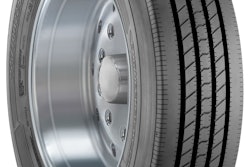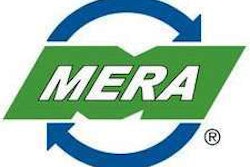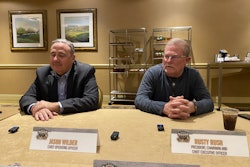By John Blodgett, MacKay & Company
You can’t open a trade journal website, newsletter, magazine or attend a conference in the commercial trucking market without seeing articles about new technologies now or coming down the pike.
Autonomous vehicles, telematics, the Internet of Everything (IoE), alternative-powered vehicles, blockchain, 3D printing, solar-powered flying monkeys (just seeing if you are still paying attention), drones and many more are making this (from my perspective) a very exciting time. Especially when you consider the pace of change, this is not the pace of your grandfather’s industrial revolution.
I recently attended the ACT Expo in Long Beach, Calif. This was the seventh annual conference focused on Advanced Clean Transportation, with primary focus on commercial on-highway vehicles.
What did I learn? A lot. What can I remember? Less than a lot, but I did take notes.
I attended this conference five years ago and at that time the primary discussions revolved around natural gas (CNG and LNG) powered vehicles. This time, electric powered vehicles took center stage, although natural gas, hydrogen and different types of hybrids also were discussed. Within the natural gas powered market, LNG does not seem to be the solution it once was for the long-haul market. The new Class 8 manufacturers, Thor, Nikola, Tesla and others, have alternative ideas.
Whereas natural gas was once seen as the best alternative-power solution several years ago, I think the market now has decided there will be several solutions based primarily on the vehicle applications. There are a vast number of truck and bus applications with different distance requirements, weight hauling requirements, operating characteristics (stop and go vs. long haul), regulatory mandates by region and fuel/charging accessibility needs that will have an impact.
If you work for a component manufacturer, your company should be evaluating these technologies along with the impacts and opportunities (if not, give me a call).
So, what do all these alternative-powered vehicle options mean if you are a heavy-duty vehicle service provider? What should you do?
You certainly don’t want to put your head in the sand, but you have time to decide your action plan related to these different power options. Alternative-powered vehicles represent a very small portion of retail sales and the operating universe. There is still a lot to shake out with each technology, so fully committing now to knowing how to service or sell parts for these alternative-powered vehicles I would think is a bit premature.
Keep abreast of what is going on, keep up on the industry trade publications, attend conferences, expose your team members to opportunities to learn more. If you are affiliated with a manufacturer or other industry organization, listen and learn from them. Consider giving more weight to hiring folks with some alternative vehicle experience.
Survey your customers and potential customers. What are they thinking, testing or considering testing? Where do you live? Who are your customers? If you live in California and your primary customers are municipalities and other government organizations — the time is now (or yesterday) to get up to speed on alternative-powered vehicle support.
If you have customers testing or using alternative-powered vehicles, don’t hesitate to ask to learn with them (all they can say is no). Maybe there are issues with the new technology that your business might be better suited to address than them.
Don’t fear the changes; look for the opportunities.
John Blodgett has worked for MacKay & Company for more than 20 years and is currently vice president of sales and marketing, responsible for client contact for single- and multi-client projects. He can be reached at [email protected].











